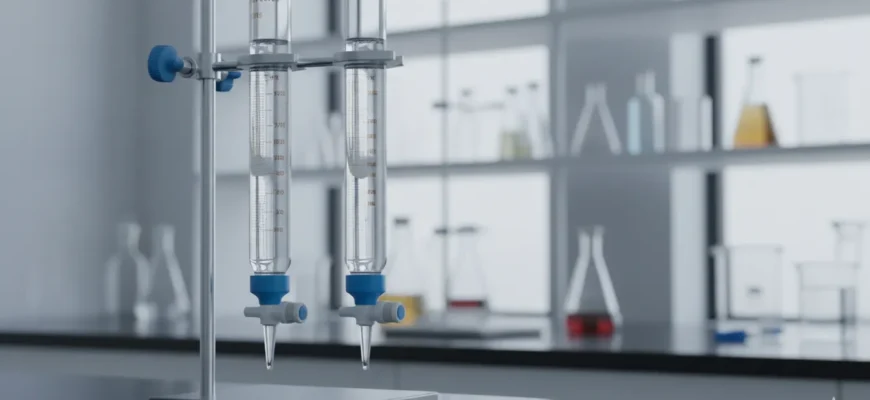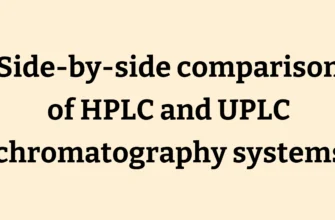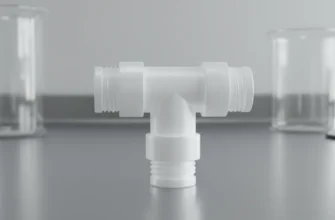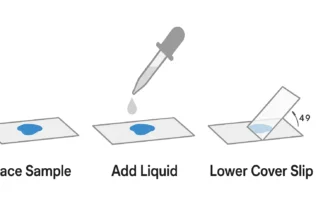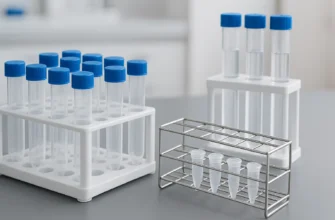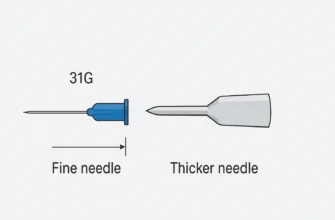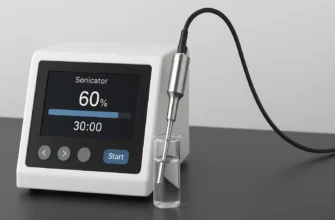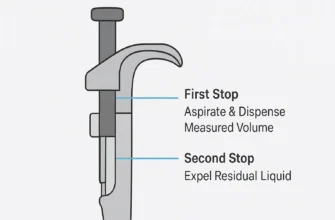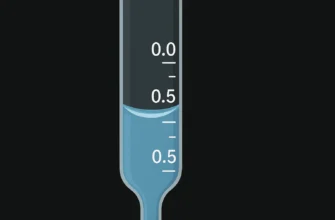Choosing the Right 100ml Burette: A Complete Guide
Key Highlights
A 100ml burette is a fundamental piece of laboratory glassware used for dispensing precise volumes of liquid, particularly essential in titrations and analytical chemistry procedures. High-quality burettes are manufactured from borosilicate glass, which provides excellent chemical resistance and thermal durability with a softening point of 820°C. Burettes are categorized into Class A and Class B accuracy classifications, where Class A burettes offer the highest precision with ±0.10ml tolerance for 100ml capacity, making them ideal for analytical and research-grade work. Class B burettes provide ±0.20ml tolerance and represent a more affordable option suitable for general laboratory use and educational purposes. Key features such as stopcock type—PTFE (polytetrafluoroethylene) or glass—significantly influence a burette’s functionality, with PTFE stopcocks offering superior chemical resistance and requiring no lubrication.
Introduction
The burette serves as a crucial piece of laboratory glassware for achieving precise liquid measurement in chemical experiments, especially titrations where accuracy directly impacts experimental results. With various options available in materials, accuracy classifications, and pricing, selecting the appropriate burette requires understanding key technical specifications and laboratory requirements. This comprehensive guide examines essential features from durable borosilicate glass construction to accuracy class differences, ensuring informed decision-making for optimal experimental outcomes.
Understanding 100ml Burettes and Their Key Features
A 100ml burette consists of a long, graduated glass tube with a stopcock or valve at the bottom controlling liquid flow. Volume markings along its length enable precise measurement of dispensed volumes, typically graduated in 0.2ml subdivisions for 100ml capacity burettes. The construction materials and accuracy classification directly impact performance and measurement reliability, making these factors essential considerations for experimental success.
Materials, Construction, and Types
Borosilicate Glass Construction
Premium burettes utilize high-quality borosilicate 3.3 glass, considered superior laboratory glassware due to impressive thermal properties. Borosilicate glass demonstrates exceptional heat tolerance with specific thermal characteristics:
-
Strain Point: 515°C
-
Annealing Point: 565°C
-
Softening Point: 820°C
This material provides excellent resistance to chemical corrosion and thermal shock, featuring a low coefficient of thermal expansion (3.3 × 10⁻⁶ /°C) that prevents cracking during temperature fluctuations. Borosilicate glass resists most chemicals except hydrofluoric acid (HF), phosphoric acid, and hot caustic solutions.
Stopcock Types and Features
PTFE Stopcocks
PTFE (polytetrafluoroethylene) stopcocks represent the preferred choice for modern laboratory applications. Key advantages include:
-
Chemical Resistance: Highly resistant to aggressive reagents including HCl and NaOH
-
No Lubrication Required: Eliminates contamination risks from stopcock grease
-
Low Friction Operation: Enables precise drop control without leakage
-
Durability: Superior longevity compared to traditional glass stopcocks
Glass Stopcocks
Traditional glass key stopcocks require stopcock grease for smooth, leak-proof operation. While offering excellent precision and control, they demand more maintenance including regular grease removal and reapplication. Glass stopcocks may be preferred for specific applications requiring maximum chemical compatibility.
Alternative Designs: Detachable Rubber Tube Systems
Some burettes feature detachable rubber tube assemblies, offering cost-effective solutions particularly suitable for educational settings. These systems typically include:
-
Main borosilicate glass burette body
-
Detachable glass tip
-
Flexible rubber tubing
-
Metal pinch clip for flow control
-
Polyethylene reservoir bottle for automatic zero functionality
Auto-Zero Burettes provide easy filling and automatic zeroing by squeezing the reservoir bottle to fill the burette, then releasing pressure to drain excess liquid back, automatically setting the burette to zero.
Accuracy and Classification: Class A vs Class B 100ml Burettes
Class A Burettes
Class A burettes represent the highest accuracy standard, manufactured to strict precision requirements complying with DIN ISO 385 standards. For 100ml capacity:
-
Tolerance: ±0.10ml
-
Subdivisions: 0.20ml graduations
-
Primary Applications: Analytical chemistry, quantitative analysis, research applications requiring maximum precision
Class B Burettes
Class B burettes offer standard accuracy suitable for general laboratory work. For 100ml capacity:
-
Tolerance: ±0.20ml
-
Subdivisions: 0.20ml graduations
-
Primary Applications: Educational settings, preparatory experiments, routine laboratory work where highest precision is not critical
Comparison Table
| Feature | Class A Burette | Class B Burette |
|---|---|---|
| Accuracy | Highest precision for quantitative work | Standard precision for general use |
| Tolerance (100ml) | ±0.10ml | ±0.20ml |
| Material | Premium borosilicate glass | Borosilicate or standard glass |
| Primary Use | Research, quality control, analytical chemistry | Education, preparatory experiments |
| Cost | Higher investment | More affordable option |
| Calibration Frequency | Less frequent due to superior accuracy | More frequent calibration may be required |
How to Choose the Best 100ml Burette for Your Laboratory Needs
Factors to Consider: Precision, Durability, and Pricing
Precision Requirements
For sensitive experiments such as titrations requiring accurate concentration determinations, Class A burettes with ±0.10ml tolerance are essential for reliable results. Applications with less stringent accuracy requirements can effectively utilize Class B burettes, offering functional performance at reduced cost.
Durability Considerations
Burettes constructed from borosilicate 3.3 glass provide superior thermal and chemical resistance properties, ensuring reliability across diverse laboratory applications. High-quality construction withstands harsh laboratory environments and repeated use while maintaining measurement accuracy.
Decision Framework
-
High-Precision Analytical Work: Select Class A burettes for guaranteed low tolerance and maximum accuracy
-
General Laboratory or Educational Use: Class B burettes provide cost-effective functionality
-
Demanding Chemical Environments: Choose borosilicate glass construction for thermal and chemical resistance
-
Budget Considerations: Balance accuracy requirements with available budget, considering long-term reliability
Maintenance and Safety Considerations
Proper Cleaning Protocols
Regular maintenance ensures continued accuracy and longevity:
-
Daily Cleaning: Rinse thoroughly with distilled water after each use
-
Deep Cleaning: Use mild detergent solutions and burette brushes for stubborn residues
-
Stopcock Maintenance: PTFE stopcocks require minimal maintenance, while glass stopcocks need periodic grease removal and reapplication
-
Storage: Store vertically in burette clamps to prevent breakage
Safety Precautions
Essential safety measures during burette operations include:
-
Personal Protective Equipment: Always wear safety goggles, lab coats, and gloves
-
Secure Mounting: Ensure burettes are properly clamped to prevent tipping
-
Controlled Filling: Use funnels and fill slowly to avoid splashes, removing funnels after filling
-
Air Bubble Removal: Check for and eliminate air bubbles that can affect measurement accuracy
-
Proper Disposal: Follow appropriate chemical waste disposal procedures
Where to Buy Reliable 100ml Burettes
Online Availability
High-quality laboratory glassware is available through specialized scientific supply companies and major online retailers. Reputable suppliers clearly specify burette classifications (Class A or B), materials (borosilicate glass), tolerance specifications, and stopcock types in detailed product descriptions.
Pricing Information
Current market pricing for 100ml burettes varies based on specifications:
-
Class B Burettes: Range from $4.50-$17.95 for basic models
-
Class A Burettes: Premium pricing reflecting superior accuracy standards
-
Bulk Quantities: Volume discounts available for educational institutions and research facilities
Purchasing Considerations
When selecting suppliers, prioritize:
-
Manufacturer Reputation: Established brands like EISCO Labs known for quality control and manufacturing standards
-
Specification Verification: Confirm accuracy classifications, tolerance levels, and material compliance with DIN ISO 385 standards
-
Customer Reviews: Evaluate feedback regarding product performance and supplier reliability
-
Technical Support: Access to expert consultation for optimal equipment selection
Standards and Compliance
ISO 385:2005 Standard
The international standard ISO 385:2005 establishes metrological and construction requirements for laboratory burettes. This standard specifies:
-
Reference Temperature: 20°C standard (27°C alternative for tropical use)
-
Volume Unit: Milliliter (ml) equivalent to cubic centimeter (cm³)
-
Delivery Basis: Burettes calibrated to deliver volume (“Ex”) from zero to any graduation
-
Material Requirements: Chemical resistance and thermal properties meeting HGB3 standards
Class AS Burettes
A specialized classification, Class AS burettes, incorporate a 30-second waiting time requirement before final meniscus reading, providing enhanced accuracy for critical applications.
Conclusion
Selecting the appropriate 100ml burette requires careful evaluation of accuracy requirements, durability needs, and budget constraints. Class A burettes with ±0.10ml tolerance serve analytical and research applications demanding maximum precision, while Class B burettes with ±0.20ml tolerance provide cost-effective solutions for general laboratory and educational use. Borosilicate glass construction ensures chemical resistance and thermal durability, while PTFE stopcocks offer superior performance compared to traditional glass designs. Understanding these key specifications and following proper maintenance protocols ensures optimal experimental results and extended equipment longevity.
Frequently Asked Questions
Are 100ml burettes suitable for precise volumetric measurements in analytical chemistry?
Yes, Class A 100ml burettes with ±0.10ml tolerance are specifically designed for high-accuracy analytical chemistry applications. These burettes comply with DIN ISO 385 standards and provide the precision required for critical quantitative analyses. For optimal results, use complete Class A glassware sets including burettes and accompanying volumetric equipment.
How do you properly clean and store a 100ml glass burette?
After use, rinse the burette thoroughly with deionized water, then use appropriate cleaning solutions and burette brushes if needed. For glass stopcocks, disassemble components, clean separately, and reapply thin layers of stopcock grease before reassembly. PTFE stopcocks require minimal maintenance with regular cleaning to remove chemical residues. Always store burettes vertically in burette clamps to prevent breakage and maintain proper drainage.
What are the common safety precautions when handling a 100ml burette in the laboratory?
Essential safety measures include wearing protective equipment (safety goggles, lab coats, gloves), securing burettes vertically in clamps to prevent tipping, using funnels for controlled filling while keeping the burette top below eye level, removing air bubbles before measurements, and handling stopcocks carefully for precise flow control. Always follow proper chemical disposal procedures and maintain clean laboratory practices.
What is a burette and its primary use?
A burette is a precise glass laboratory instrument designed to dispense variable volumes of liquids in titrations and analytical procedures. Its graduated scale and controlled flow mechanism enable accurate measurement of dispensed volumes, making it essential for experiments requiring exact liquid measurements, particularly in chemical analysis, quantitative determinations, and research applications where measurement precision directly impacts experimental reliability.

